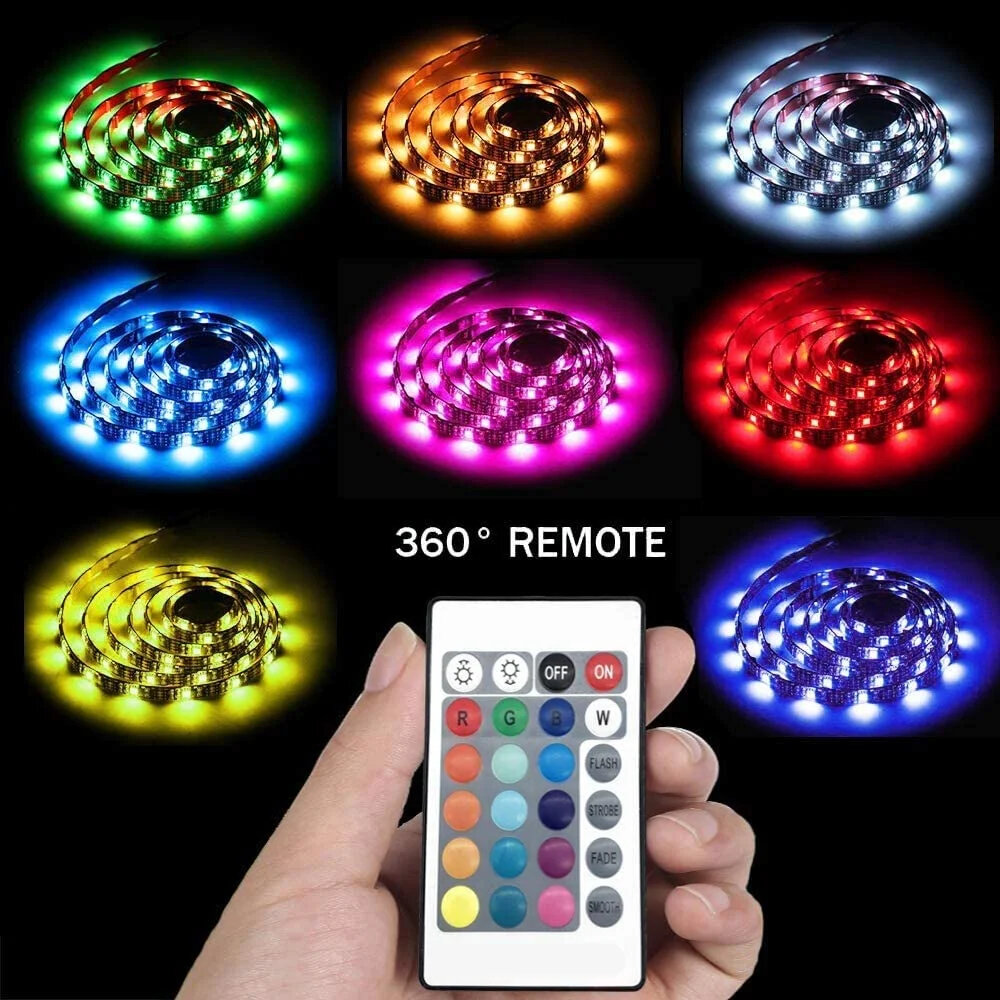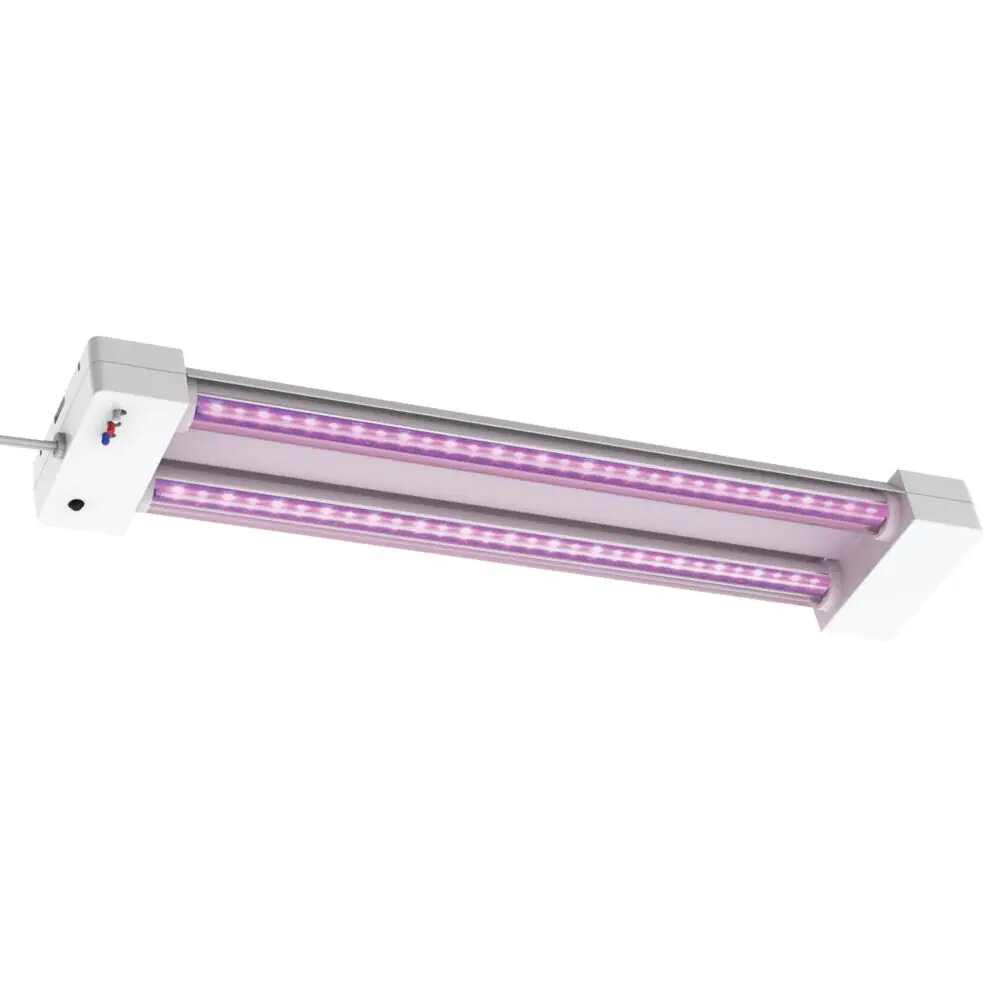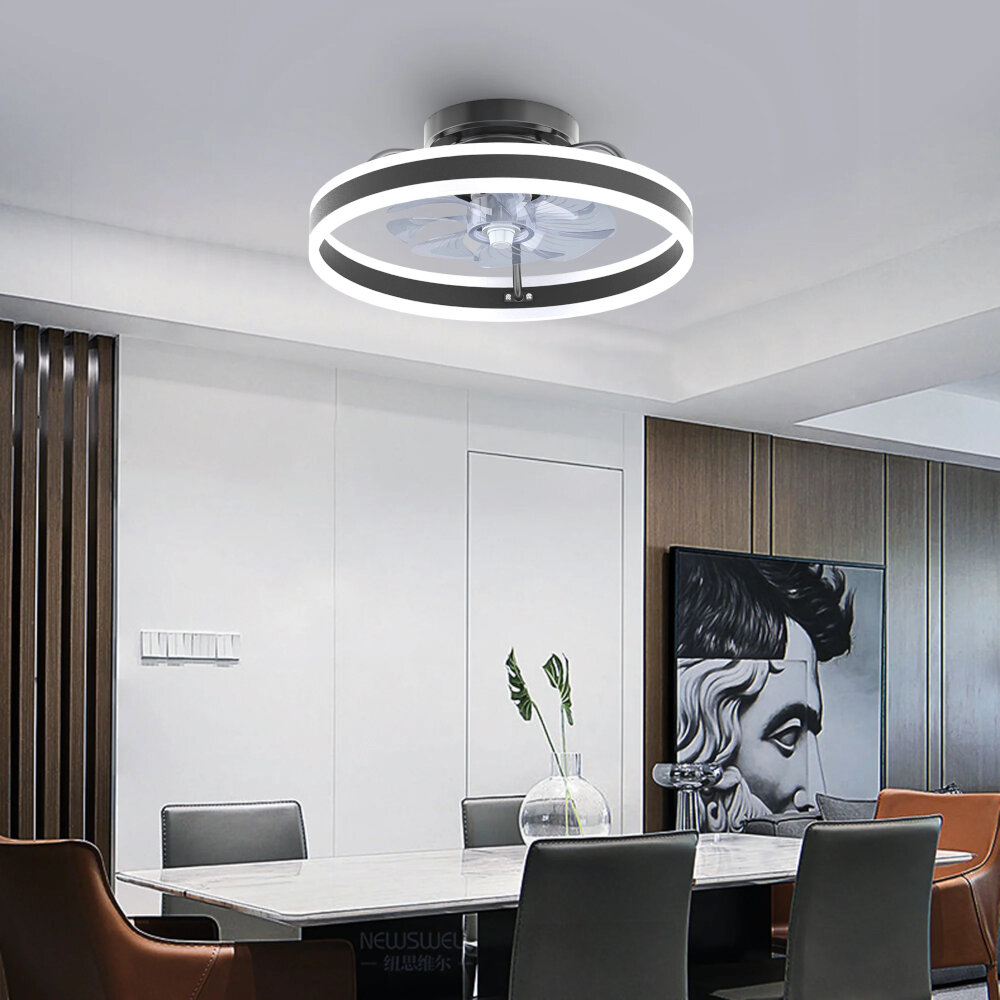Understanding the Functionality of LED Light on Android: A Comprehensive Guide

The LED light on Android devices is an essential feature that is often overlooked by users. It is a tiny light that is located on the front or back of the phone and is used to indicate various notifications, such as incoming calls, messages, and emails. LED lights are energy-efficient and have a longer lifespan than traditional bulbs, making them an ideal choice for mobile devices. Understanding the functionality of LED lights on Android can help users make the most of this feature and stay informed about their notifications. This comprehensive guide will explore the different types of LED lights on Android devices, how they work, and how to customize their settings. Whether you want to use the LED light to know when you have an incoming call or to indicate a low battery, this guide has got you covered. We will also discuss the importance of LED lights in conserving battery life and how to use them to save power. By the end of this guide, you will have a better understanding of the functionality of LED lights on Android and how to use them to improve your mobile experience.
The LED light on Android devices is a small but powerful feature that offers users various functionalities. It is used to notify users of incoming calls, messages, and other notifications in a subtle but effective manner. The LED light functionality can be customized to suit users’ preferences by changing the color, duration, and pattern of the blinking light. Additionally, some Android devices also use the LED light as a flashlight or to indicate battery level. Understanding how the LED light works on Android devices can greatly improve user experience and productivity.
Understanding LED Technology

The functionality of LED light on Android devices is becoming increasingly popular with the rise of mobile technology. LED stands for Light Emitting Diode, and it refers to a type of technology that produces light through the movement of electrons. This technology is very efficient because it does not require any heat to produce light, and it can produce a wide range of colors. The LED technology is commonly used in mobile devices, such as smartphones and tablets, to produce notification alerts for incoming calls, messages, and other notifications. LED technology is also used in other applications, such as streetlights, automotive lighting, and home lighting. The use of LED lighting in these applications is because of its longevity and energy efficiency. LED lights can last for up to 50,000 hours, making them an ideal replacement for traditional incandescent bulbs. Additionally, they use less energy than traditional bulbs, making them a more environmentally friendly option. Understanding the technology behind LED lighting can help you appreciate the benefits and functionality of LED lights on Android devices and other applications.
LED technology is based on the phenomenon of electroluminescence, which is the emission of light from a material when an electric current is passed through it. In LED lights, a semiconductor material is used to create a junction between two different materials, one with excess electrons (n-type) and the other with a deficit of electrons (p-type). When a voltage is applied to the junction, electrons move from the n-type material to the p-type material, causing the release of energy in the form of photons, which are the basic units of light. The color of the light emitted depends on the type of semiconductor material used. LED technology is highly efficient, durable, and versatile, making it a popular choice for lighting in numerous applications, including smartphones, TVs, and other electronic devices.
LEDs or Light Emitting Diodes are an integral part of any Android device as they provide notifications and alerts to the users. There are mainly two types of LEDs used in Android devices, namely RGB LED and Notification LED. The RGB LED is a multi-colored LED that is used to indicate various functions such as battery charging status, low battery warning, and incoming calls. On the other hand, the Notification LED is a single-colored LED that is used to inform the user about missed calls, new text messages, emails, and other notifications. Both types of LEDs are essential in providing an interactive and user-friendly experience to the users.
LED technology has brought about significant advantages in the lighting industry. LEDs are highly energy-efficient, consuming less power and generating less heat compared to traditional lighting systems. They also have a long lifespan, lasting up to 50,000 hours, which reduces the need for frequent replacements. Additionally, LED lights emit less ultraviolet radiation, making them safer for human use. On the other hand, the main disadvantage of LED technology is the initial cost, which is higher compared to traditional lighting systems. The quality of light produced by LEDs is also different, with some people preferring the warmer color temperatures of traditional bulbs. Finally, the disposal of LED lights can be challenging due to the presence of toxic materials such as lead and mercury.
LED Light on Android Devices

The LED light on Android devices is a small yet powerful feature that can have a significant impact on your smartphone experience. It is commonly found on the back of devices, near the camera lens, and is used to indicate notifications, charging status, and even as a flashlight. Many Android users do not fully understand the functionality of this feature, and it is often overlooked or underutilized. However, with a little knowledge and a few tweaks, you can make the most of this feature and enhance your device’s functionality. One of the most common uses of the LED light on Android devices is as a notification indicator. When you receive a new message, email, or other notification, the LED light will flash or change color to alert you. This can be incredibly useful for staying up-to-date with your messages and notifications, especially if you are in a noisy or busy environment where you may not hear or feel your device’s vibration. Additionally, some apps allow you to customize the LED light color and pattern for specific notifications, giving you even more control over your device’s notifications. Overall, the LED light on Android devices is a small but powerful feature that can greatly enhance your smartphone experience, and by understanding its functionality, you can make the most of this valuable tool.
LED lights have become a common feature in Android devices, and they serve various purposes. The LED light is usually integrated into the device, and it emits light of different colors depending on the notification received. This feature is particularly useful for users who want to keep track of their notifications without having to check their phones constantly. The LED light is usually located near the device’s speaker or camera, and it is programmed to light up when a notification is received. Users can customize the LED light’s behavior, such as the color and frequency of the light, through their device’s settings. Overall, the integration of LED lights into Android devices has greatly improved user experience and convenience.
LED lights on Android devices serve various purposes, from alerting users of incoming calls or texts to indicating battery levels or charging status. The LED light can also be used as a notification light to display different colors for different types of notifications, such as blue for missed calls or green for new messages. Some Android devices also use LED lights for camera flash, providing additional lighting for low-light photography. Moreover, LED lights can be used to indicate the phone’s network status, such as a red light for no signal or a green light for a strong connection. With its versatility and practicality, the LED light on Android devices has become an essential feature for many users.
Turning on/off LED light on Android devices is an easy process that can be done through various methods. The most common way is to use the built-in flashlight feature, which can be accessed by swiping down the notification panel and tapping on the flashlight icon. Some devices also have a dedicated hardware button for turning on the flashlight. Another way to turn on/off LED light is by using third-party apps that offer more customization options, such as adjusting the brightness and color of the light. In addition, some devices have a notification LED that can be turned on/off in the settings menu. Understanding the functionality of LED light on Android devices can greatly enhance the user’s experience, as it offers a variety of useful features that can be utilized in different situations.
Customizing LED Light on Android Devices

Customizing LED Light on Android devices is a fascinating feature that allows users to personalize and enhance their phone’s notifications. Android devices come equipped with an LED light located near the speaker that lights up when a notification arrives. This LED light can be customized to suit the user’s preferences, which includes the color, frequency, and duration of the light. The customization process can be done through the phone’s settings, and there are several apps available on the Play Store that offer more advanced customization options. Customizing LED Light on Android devices not only enhances the aesthetic appeal of the phone but also helps users to prioritize their notifications. For instance, users can assign different colors to different notifications, allowing them to quickly identify the notification’s source. Users can also set the frequency and duration of the LED light, which can help them to determine the importance of the notification. The customization process is simple and easy to follow, making it accessible to all Android users. Overall, customizing LED Light on Android devices is a useful feature that enhances the user experience and helps users to stay organized.
Customizing LED light notifications on Android devices is a great way to personalize your device and make it more functional. To do this, you’ll need to access your phone’s settings and navigate to the LED notification settings. From here, you can choose which apps you want to receive LED notifications from and choose the color and frequency of the LED light for each app. You can also set custom patterns for specific notifications, such as a long blink for a missed call or a short blink for a new text message. By customizing your LED notifications, you can make it easier to keep track of important alerts and make your phone stand out from the crowd.
Third-party apps and tools have made it possible for Android users to fully customize their LED light functionality. With a variety of options available, users can select the color, frequency, and duration of their LED notifications. Some popular apps include Light Manager, which allows users to customize the LED light for different notifications such as calls, messages, and emails. Another popular app is LED Blinker Notifications, which offers a wider range of customization options including the ability to set up custom LED patterns and colors for individual contacts. These third-party apps and tools have revolutionized the way Android users interact with their devices and have made it easier for them to personalize their notifications to their liking.
Optimizing LED light on Android devices can significantly enhance your user experience. To begin with, it is essential to ensure that the LED notification settings are configured according to your preferences. You can customize the color, blink rate, and notification duration for different apps. Additionally, using third-party apps can help you further personalize the LED light’s behavior, such as enabling LED notifications for missed calls and texts. However, it is crucial to remember that excessive use of the LED light can drain your device’s battery quickly. Therefore, it’s advisable to use it judiciously and turn it off when not required. With these tips and tricks, you can enjoy the full potential of the LED light on your Android device.
Troubleshooting LED Light Issues on Android Devices

LED lights are becoming increasingly popular on Android devices, as they are a convenient way to notify users of incoming messages, calls, and other notifications. However, like any other technology, they are not immune to issues. If you are experiencing problems with your Android device’s LED light, there are several troubleshooting steps you can take to resolve the problem. The first step is to check the LED settings on your device, as this can often be the root of the problem. Make sure that the LED light is turned on, and that it is set to the correct color and frequency for the notification you are trying to receive. If the LED is still not working after checking the settings, you may need to perform a factory reset on your device to restore the LED functionality. Another common issue with LED lights on Android devices is that they may flash too quickly or too slowly, making it difficult to distinguish between different notifications. If you are experiencing this issue, you may need to adjust the frequency of the LED light. This can typically be done through the LED settings on your device, or by downloading a third-party app that allows you to customize the LED frequency. If the LED light is still not functioning properly after trying these troubleshooting steps, you may need to contact the manufacturer or a professional repair service to diagnose and fix the issue. By taking the time to troubleshoot LED light issues on your Android device, you can ensure that you never miss an important notification again.
The LED light on Android devices is a useful feature, but it can also cause some common issues. One of the most common issues is when the LED light is not working properly. This can be caused by a variety of factors, such as a damaged LED bulb or a software glitch. Another issue is when the LED light is constantly flashing or blinking, which can be annoying and distracting. This can also be caused by a software glitch or an app that is running in the background. Lastly, some users may find that the LED light is too bright or too dim, which can be adjusted in the device’s settings. Overall, it’s important to understand the functionality of the LED light on your Android device to avoid these common issues and make the most out of this helpful feature.
When it comes to resolving LED light issues on Android devices, there are a few steps you can take to troubleshoot the problem. First, ensure that LED notifications are enabled in your device settings. Next, check to see if the LED light is physically blocked or damaged. If neither of these solutions work, try resetting your device to its factory settings or updating the software. Additionally, third-party apps may interfere with LED notifications, so consider uninstalling any that may be causing issues. By following these steps, you can quickly resolve LED light issues on your Android device and ensure that you never miss an important notification again.
If you are experiencing any issues with the LED light on your Android device, it is important to seek professional help when the issue persists despite your attempts to troubleshoot the problem. This may include the light not turning on or off, the light changing colors unexpectedly, or the light not functioning properly in relation to notifications or other settings. Seeking professional help will ensure that the issue is diagnosed and resolved correctly, preventing any potential damage to your device or further complications. Ignoring LED light issues can lead to frustration and inconvenience, so it is always best to address them promptly with the help of a professional.
The article titled \Understanding the Functionality of LED Light on Android: A Comprehensive Guide\ is a detailed exploration of the various ways in which LED lights are used on Android devices. The article covers the basics of what an LED light is, as well as the different colors and patterns that are commonly used. It also goes into detail about the different ways in which LED lights are used on Android devices, including notifications, battery indicators, and more. The article also provides tips and tricks for customizing LED light settings on Android devices, making it a valuable resource for anyone looking to get the most out of their Android device. Overall, this comprehensive guide offers a wealth of information on LED lights and their functionality on Android devices.
In conclusion, LED lights on Android devices are not just fancy decorations, but they serve a significant purpose in the functionality of the device. These lights indicate different notifications, such as new messages or missed calls, and can also be used as a flashlight. The customization options available for LED lights on Android devices allow users to personalize their devices and tailor them to their preferences. It is important to understand the different colors and patterns of the LED lights to be able to interpret the notifications accurately. Overall, the LED light functionality on Android devices is a useful feature that enhances the user experience and keeps them informed of important notifications.
Dear readers, we hope that our comprehensive guide on the functionality of LED light on Android devices has been informative and enlightening for you. Now, we would like to hear from you. Have you had any experiences with LED light on your Android device? Did you find it helpful or annoying? Share your experiences with us in the comments section below. Your feedback will not only help us understand the practicality of LED light on Android devices but also assist others who are looking for information on the same topic. So, don’t hesitate, share your experiences with us today!
Conclusion

In conclusion, this comprehensive guide has shed light on the functionality of LED light on Android devices. We have learned that LED lights have multiple uses, including notifications, alerts, and camera flash. Additionally, we have explored how to customize LED light settings to suit individual preferences, making it a useful and personalized feature. This guide has provided a deeper understanding of the technology behind LED lights and how they enhance the user experience on Android devices. By following the steps provided, users can easily configure their LED lights to match their preferences and lifestyle. Overall, this guide demonstrates how LED lights play a vital role in making our Android devices more functional, practical, and user-friendly.





